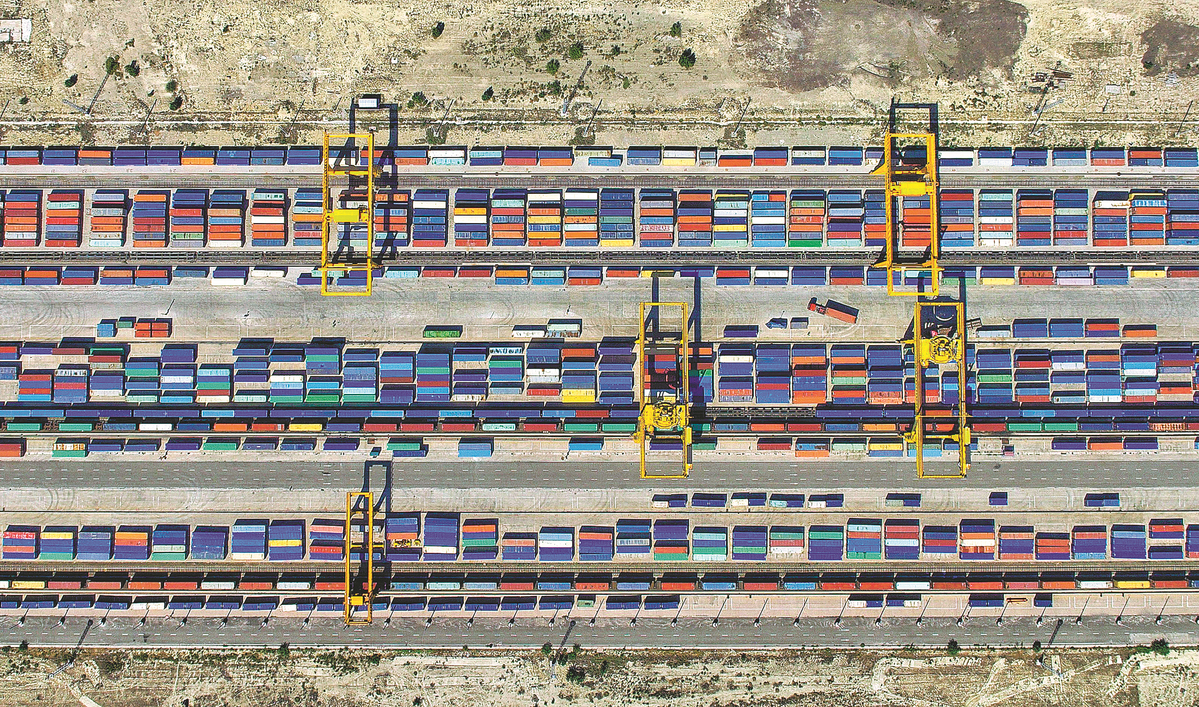Business booms at Xinjiang border ports


Preferential policies pave way for commercial success
A solitary border outpost on the edge of the vast desert has been transformed into a pivotal hub for the Silk Road Economic Belt.
As a result of this dramatic change, Alashankou Port, which is situated in the remote northwest corner of the Xinjiang Uygur autonomous region, is benefiting from the numerous opportunities offered by the Belt and Road Initiative.
A border city in Bortala Mongolian autonomous prefecture, Alashankou, which is also known as Alataw Pass, is 12 kilometers from Dostyk Port in Kazakhstan.
Alashankou lies at the western exit in China to the New Eurasian Land Bridge, one of six major corridors envisioned by the BRI. The land bridge starts from the port city of Lianyungang, Jiangsu province, and ends in the Dutch port of Rotterdam.
Li Jianglin, vice-mayor of Alashankou, said that by serving as a gateway to Central Asia and Europe, Alataw Pass is the shortest, quickest and most cost-effective international trade route along the Silk Road Economic Belt.
Rail links through Alataw Pass to Europe, known for their stability, efficiency and speed, have attracted a significant volume of domestic and international cargo, Li said.
Since China-Europe Railway Express services started operating in 2011, the number of freight trains passing through the port annually has rocketed from an initial 17 to nearly 6,000.
A total of 113 operational routes have been established for the rail link, covering 25 Chinese provinces and regions, and 21 countries. The trains transport some 200 types of goods, including automobiles and parts, cotton yarn and timber.
Known as the "windy city", Alashankou is battered by gale-force winds for more than 180 days each year. Despite the challenging weather conditions, business at the port continues to surge, driven by the dedication of its employees, who work day and night to ensure the smooth passage of freight trains.
Against a backdrop of howling gales, dockworker Bai Zhaoxin deftly operated a stacking machine to transfer cargo containers, a necessary task, as China and Kazakhstan have different railway gauges. Within one hour, some 55 containers had been reloaded.
























